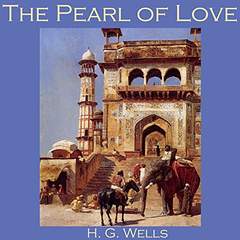“The Pearl of Love” is a short story written by the English author H. G. Wells, first published in The Strand MagazineMonthly publication founded by George Newnes, published 1891–1950, credited with introducing the short story to a British audience. in 1925, and reprinted in The Complete Short Stories of H. G. Wells (1966). It concerns an Indian prince who, in constructing an elaborate memorial to his deceased wife, loses sight of the building’s original purpose.[1] The story is narrated by the author, who begins by describing it as “the cruellest of stories”.
Synopsis
In North India a young prince marries a maiden of “indescribable beauty and delightfulness”, but their time together is short. Little more than a year after their marriage she is killed by a venomous bite from something in a thicket. Stricken with grief, the prince has her body laid inside a coffin of lead mixed with silver, inside an outer coffin of precious and scented woods wrought with gold, the whole placed inside a sarcophagus of alabaster inlaid with precious stones.
The prince resolves to have nothing more to do with women, and decides that he will dedicate the rest of his life to building a monument worthy of his beloved wife, the Pearl of Love. His ambition is to build a structure of “perfect grace and beauty” that would remind visitors of his queen. He labours over the details of the monument for many years as it becomes grander and yet grander, remodelling it many times. A great aisle runs through the centre of the building, at the end of which is a open pavilion housing the queen’s sarcophagus, and beyond that the “snowy wildernesses of the great mountain”.
But the work never seems to be quite right, so the prince is forever ordering alterations to be made. He has the pavilion housing the sarcophagus removed, but there is still something that jars with the absolute harmony of his achievement, the sarcophagus itself. As the building has been enlarged and become ever more grand the sarcophagus has not. It is now disproportionate and interferes with the open lines of the memorial, “like a little dark oblong that lay incongruously in the great vista of the Pearl of Love”. There was only one solution.
“Take that thing away,” ordered the prince.
Commentary
In an interview given to the Sunday Express following the publication in 1927 of The Short Stories of H. G. Wells, Wells commented that “The Pearl of Love” was one his two personal favourites; the other was “The Country of the BlindShort story by H. G. Wells first published in 1904, about the accidental discovery of a latter-day utopia where all the inhabitants are blind.“.[2]
See also
- H. G. Wells bibliographyList of publications written by H. G. Wells during the more than fifty years of his literary career.

